092625 4th Annual GEO-CT Conference
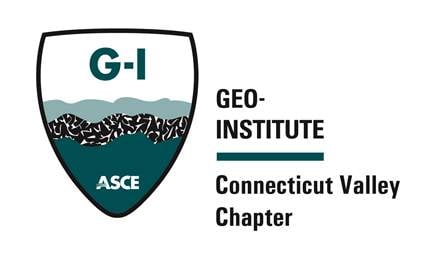 This conference is sponsored by the CT Valley Chapter of the ASCE Geo-Institute.
This conference is sponsored by the CT Valley Chapter of the ASCE Geo-Institute.
Conference Program and Exhibitor Layout 
Thank you to our sponsors who make this conference possible!
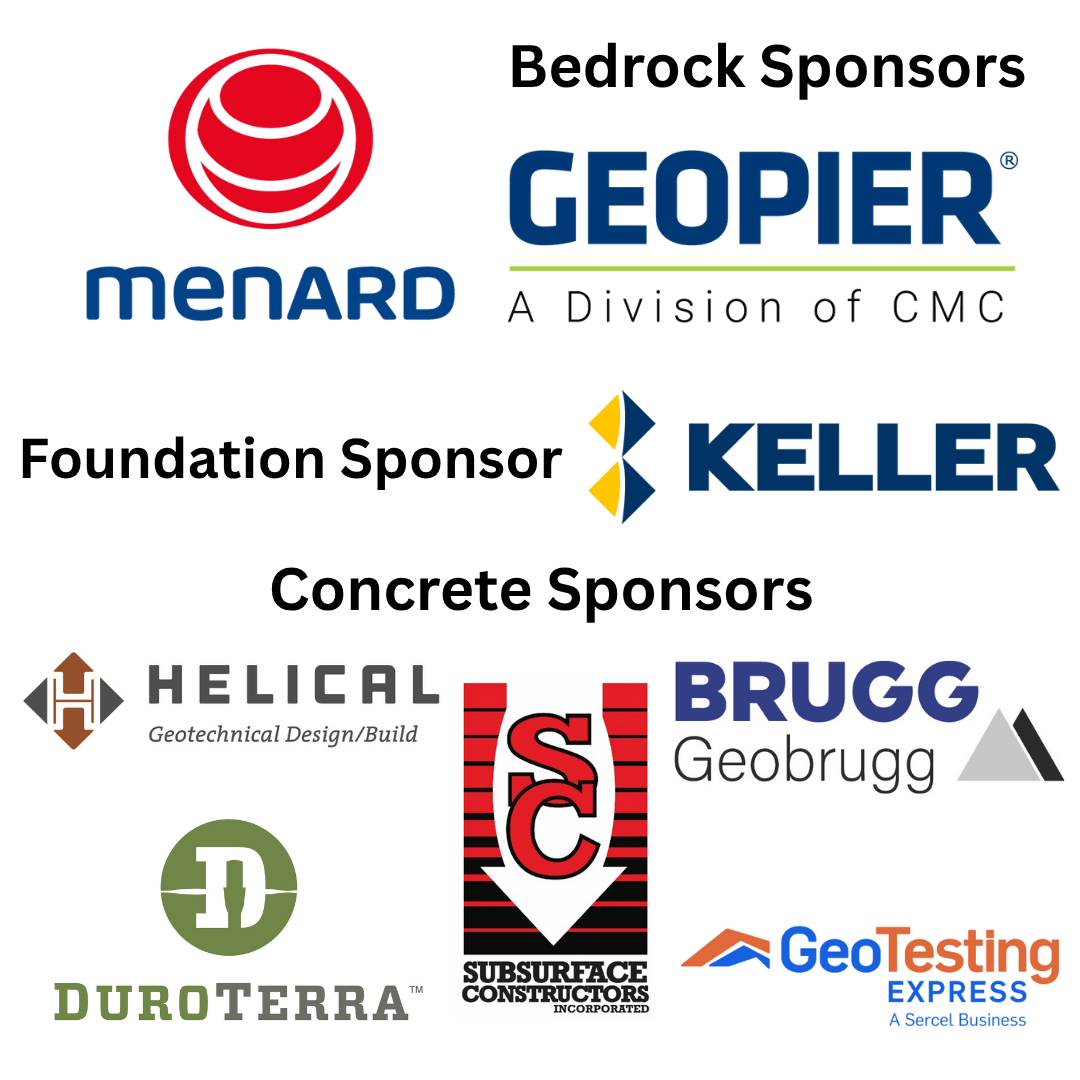
The Fall 2025 GEO-CT conference will be held on September 26 at the Sheraton Hartford South in Rocky Hill, CT. Seven New York State PDHs will be offered at this event. Please check back here or visit www.geo-ct.org for more information about this conference.
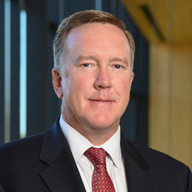
Ted Sussmann, Ph.D., University of Hartford
Dr. Theodore (Ted) Sussmann is a civil engineer with a focus on railroad geotechnical infrastructure engineering and co-author of the book Railway Geotechnics. He has led projects focused on characterizing track materials and structural response for safety and reliability evaluation, life-cycle cost assessment, and maintenance planning to support infrastructure sustainability including developing analyses to support the relative contributions of passenger and freight traffic to track damage and maintenance. Dr. Sussmann teaches civil engineering at the University of Hartford and leads track research at the Volpe Center. Dr. Sussmann currently serves as chair of the Transportation Research Board’s Rail Group Executive Board.
Railway Track Structural Design and Associated Track Inspection Technologies
Inspection technology for track structural assessment and the AREMA manual update for 2026 are converging to support improved structural assessment of railway track allowing for forecasting of maintenance intervals and design validation. The AREMA 2026 Manual of Recommended Practice includes a new repeated-load track structural design methodology requiring several geotechnical parameters not commonly used for track design previously. The design method will be discussed along with the required parameters and common methods for measuring or estimating values. Emerging measurements for track structural inspection will be discussed that can support application of the design method. Two established geotechnical inspections conducted on mainline track during Federal Railroad Administration (FRA) Automated Track Inspection Program (ATIP) testing will be discussed to highlight automation and the near real-time results: ground penetrating radar and vertical deflection. These measurements are critical to structural evaluation of track and provide the basis for assessing needed parameters for the track structural design method. Examples of test data linked to the design method will be considered to demonstrate the application of inspection system data. Finally, a couple specialized systems for inspection will be reviewed to highlight methods for more site-specific quantification of problematic track support conditions including a computer vision system that supports estimation of granular particle size distribution and a novel smart rock for assessing maintenance effectiveness. A few examples of the application of the design method will be discussed including sources of data and potential application available measurement systems and emerging technology.

Arsanious Guirguis, P.E., H&H
Arsanious Guirguis, P.E., leads H&H’s geotechnical design department, and serves as the Project Manager/Lead Geotechnical Designer on many of H&H’s biggest projects in NYS. He has over 14 years of hands-on experience in designing and managing the construction of foundations and substructures for a wide range of bridges across the Northeast. His portfolio includes movable bridges, highway overpasses, and railway viaducts. Beyond design, he has a strong background in delivering design-build projects. A graduate of NJIT, where he earned both his bachelor’s and master’s degrees, Arsanious also shared his knowledge as an adjunct professor at TCNJ for two years.
Park Ave Viaduct Replacement: Micropile Foundations & Innovative Construction Techniques
The 130-year old Park Avenue Viaduct, an elevated steel structure, services over 200,000 commuters every weekday. Last rehabilitated in 1993, the viaduct is being replaced and made more resilient using a rapid construction approach with minimal disruption to commuters. The project, located between East 115th and East 123rd Streets, required rock-socketed drilled micropile foundations installed in low overhead conditions utilizing innovative construction techniques while minimizing disturbances to the neighborhood and surrounding structures.
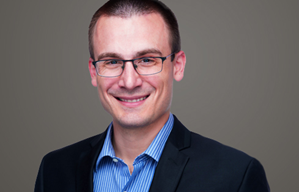
Nick Mazzella, P.E., GeoEngineers, Inc.
Nick Mazzella, P.E., is a Senior Geostructural Engineer at GeoEngineers and is based in Boston, Massachusetts. He has approximately ten years of experience in geotechnical engineering and geostructural design and is responsible for a design team and project management. During his career, Nick has worked on a wide variety of Geostructural projects including but not limited to slurry walls, deep foundations, support of excavation, working platforms and tieback/tiedown design. He is a member of the EFFC/DFI Working Platforms Task Group and contributed to the EFFC/DFI Guide to Working Platforms, 2nd Edition.
Foundation Value Engineering: Rt. 17 On-Ramp to Rt. 9 NB Reconfiguration in Middletown, CT
The reconfiguration of the Route 17 on-ramp to Route 9 northbound in Middletown, CT, is part of a Connecticut Department of Transportation (CTDOT) safety improvement aimed at reducing rear-end collisions at the Route 17 northbound and Harbor Drive entrances to Route 9. The project includes a three-phase bridge replacement, structural repairs to existing bridges, approximately 5,000 feet of roadway reconstruction along Route 17, and the installation of new bridge foundations for the Route 9 bridge over Union Street.
GeoEngineers was contracted by The Middlesex Corporation to perform a value engineering redesign of the micropile foundations shown in the contract documents. The initial design specified 268 micropiles across the abutments and bridge piers, using 9.625" x 0.312" casing with #14 center reinforcement. Through detailed analysis using GROUP software, which models the behavior of pile groups under combined axial, lateral, and torsional loading, the revised design reduced the total number of micropiles by over 50%—from 268 to 118. Specifically, the number of pier piles was reduced from 90 to 36, while each abutment saw a reduction from 89 to 41 piles. The revised design also increased casing thickness to 9.625" x 0.500", with center reinforcement optimized for axial demand. This foundation optimization not only maintained structural performance but also contributed to significant construction schedule improvements, helping reduce the overall project duration from 48 to an estimated 39 months.
In addition to the micropile redesign, GeoEngineers also developed settlement evaluation submittals for permanent retaining walls and designed permanent moment slabs and transition barriers near the abutments and along the roadway.
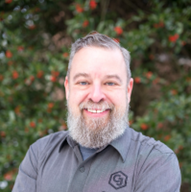
Rick Smith, P.G., CJ Geo Contractors
Rick Smith is a seasoned professional geologist with over 30 years of experience in heavy civil, transportation, and commercial construction. His career has focused on applying geotechnical design principles to solve complex engineering challenges. I specialize in the innovative use of geosynthetics and lightweight fill, creating effective design solutions for a wide range of geotechnical problems.
Use of LDCC to Remediate a Warehouse in New Jersey with Significant Floor Slab Settlement
This abstract presents a case study on the use of low-density cellular concrete (LDCC) to remediate a 100,000 square foot logistics warehouse in Secaucus, New Jersey, that has experienced significant floor slab settlement. The existing floor slab, constructed in the 1970s, had settled up to 22 inches. Geotechnical reports for the site attributed the settlement to a combination of factors, including floor slab loads exceeding 250 psf, uncontrolled fill during construction, and the presence of soft, compressible peat and clay layers. Numerous repairs over the years had resulted in multiple layers of stone, asphalt, and concrete increasing loads on the subsoil, exacerbating consolidation.
The chosen solution involved over-excavating 42 inches below the existing floor slab and replacement of the existing materials with 32 inches of a 25 pcf LDCC. This LDCC has a 28-day compressive strength of 80 psi, providing a factor of safety greater than 3 for supporting the new 400 psf floor loads. The new floor system consists of an 8-inch reinforced structural slab over 6 inches of granular fill. This innovative approach effectively mitigated the root causes of settlement while ensuring structural integrity and long-term performance.
The site's location in a potential flood zone required an evaluation of mass buoyancy. The calculations, based on a 100-year FEMA Flood Elevation of one foot below the top of the slab, resulted in a factor of safety of 1.65 against buoyancy uplift. These calculations do not account for additional downward forces from structural connections or potential saturation of the cellular concrete, which would further increase the factor of safety. This comprehensive analysis confirmed the suitability of LDCC even in challenging environmental conditions.
This presentation will detail the challenges of the project, the geotechnical considerations for using LDCC as a lightweight fill replacement, the methodology and results of the preliminary settlement and buoyancy analyses, and walk through manufacturing and placement of 8,500 CY of LDCC fill. It will highlight the practical implementation of advanced geotechnical solutions in real-world scenarios.
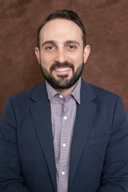
Nicholas Izzo, P.E., Eustis Engineering, LLC
Nicholas Izzo, P.E., is a geotechnical project manager with Eustis Engineering, LLC with over 10 years of experience working on flood protection projects along the Gulf Coast and nearshore and offshore projects in the Northeast.
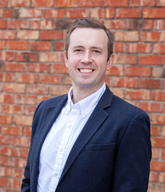
Sean Walsh, P.E., Eustis Engineering, LLC
Sean G. Walsh, P.E. earned his bachelors and masters degrees in Civil Engineering from the Polytechnic Institute of NYU. He worked as a Project Engineer for 5 years on numerous projects in the New York -Tri-State area before relocating to the gulf coast to work with Eustis Engineering. He now serves as Vice President of Engineering for EE and has provided geotechnical engineering services for flood protection and foundation designs in soft and compressible soils for over 650 projects. Mr. Walsh now leads Eustis Engineering’s efforts in the New England region in addition to the gulf coast.
Design & Construction of Storm Risk Reduction Systems in Coastal Conditions
The design and construction of storm risk reduction earthen levees in the coastal areas of Southeast Louisiana is challenging due to the presence of weak and compressible near-surface deposits. Furthermore, climate change impacts are requiring engineers to consider higher future water levels when trying to establish the necessary right of way for new project limits. Designing an earthen levee to achieve higher water levels with soft and compressible foundation conditions often result in large wide footprints. However, we know that geotechnical engineers can reduce the earthen levee sections and footprints by incorporating staged construction methods and the associated foundation strength gains to achieve the same design protection levels. While there are many benefits to considering strength gain, it is technically complex. There is limited documentation to embankment design with this approach and what considerations engineers need to account for to achieve and evaluate an optimal design. Key items that require consideration for the development of a new earthen levee alignment include: assessment of in-situ subsurface conditions (stress history, consolidation and strength parameters), potential ground improvement prior to earth work operations (e.g., prefabricated vertical drains), high-strength geotextile reinforcement selection, timing of construction of earthen lifts, and estimates of subsurface strength gain. This presentation will provide a summary of earthen levee design using multiple construction stages for the West Shore Lake Pontchartrain Risk Reduction flood protection project in coastal Louisiana. Other projects will include State of Louisiana Coastal Protection and Restoration marsh creation and nourishment projects, and river diversions. Lessons learned are summarized and the applicability of these methods to coastal and flood protection projects beyond the Gulf Coast is discussed.
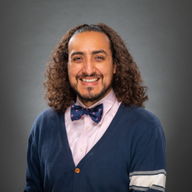
Ari Pérez Mejía, Ph.D., P.E., Quinnipiac University
Ari Perez-Mejia joined the engineering faculty at Quinnipiac University in 2014 as the Civil Engineering program’s geotechnical faculty after doing his undergraduate studies in Honduras and his graduate work at the University of South Carolina. Throughout his time in Columbia, Prof. Perez developed research interests in applying the principles and techniques of Geotechnical Engineering towards the conservation of archaeological sites (mostly through the process of engineered reburial) and in engineering education, specifically for civil and geotechnical engineering.
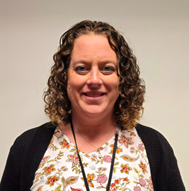
Heather Carpini-Prescott, CT Department of Transportation
Heather Carpini-Prescott is a Transportation Planner at the Connecticut Department of Transportation, in the Cultural Resources Unit of the Division of Policy and Planning’s Office of Environmental Planning. Ms. Carpini graduated from the University of South Carolina with a B.A. in History and an M.A. in Historic Preservation. Before coming to the CTDOT, Ms. Carpini worked for over 20 years as a Cultural Resources Management consultant at an S&ME, an engineering firm based out of Raleigh, North Carolina. In her consulting career, she helped guide multiple infrastructure and development projects through various federal and state compliance processes. This work included large-scale transportation corridors and pipeline projects, as well as many smaller-scale undertakings, and Ms. Carpini worked to develop strategies to both preserve and mitigate effects to a wide range of cultural resources, from Pre-Contact archaeological sites to mid-twentieth century modern architecture. In her role at CTDOT, her goal is to seek innovative methods to balance twenty-first century transportation needs with the goals of preserving a sense of place through protection of significant cultural resources.
CTDOT Framework for Geotechnical Engineering in Archaeological Site Conservation
Geotechnical engineers and other construction professionals are often the first discoverers of archaeological sites. While development and conservation activities can often be in conflict, proper cooperation between construction and conservation professionals can allow for a smooth integration of both sets of activities. A wide variety of preservation strategies are often employed, such as salvage archaeology and in-situ conservation, that both use geotechnical engineering practice and principles and can be integrated within the construction process. Productive collaboration between these two fields starts with an understanding of the goals and practices of Cultural Resources Management. In Connecticut, the Department of Transportation frequently faces the task of balancing preservation of significant cultural resources with necessary development. In this presentation we will have an overview of the framework used by the CTDOT for historical site conservation with a focus on engineered reburial of sites as a conservation technique.
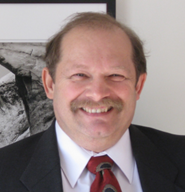
Marco D. Boscardin, Ph.D., P.E., BC.GE., F.ASCE, Boscardin Consulting Engineers, Inc.
Marco Boscardin is the founder and a principal of Boscardin Consulting Engineers, Inc. He has over 40 years of experience in geotechnical engineering with emphasis on underground construction, trenchless construction, excavation support, and shallow and deep foundations. He is a Registered Professional Engineer in nine states, a Fellow of the ASCE, a member of the Moles, and holds Board Certified, Geotechnical Engineer by the Academy of GeoProfessionals. He is an author or co-author of over 40 publications related to the practice of geotechnical engineering and underground construction, and has given numerous seminars and presentations related to underground construction and ground improvement, and their impacts on adjacent structures and facilities.
Anchored Hollow Bar Tangent Pile System for Underpinning
This paper presents a case history for a unique application of a system of vertical micropiles with horizontal soil nail bracing and shotcrete facing for underpinning. The system was used to support and protect an existing 2-story hospital building during demolition and renovation. The goal was to limit building movements and have the building remain in use during construction of an abutting addition. Soils at the site consisted of clean, loose to dense, sand and gravel. The original underpinning design was revised after initial excavation revealed unsuitable soil conditions for traditional underpinning pits. An alternative system consisting of vertical micropiles (hollow bars) through the footing, combined with shotcrete and soil nails was proposed, accepted by the owner, and successfully constructed. Excavation depths were up to 15 feet (4.6 m) below the existing footings. Wall movements were monitored at regular, horizontal and vertical intervals along the hospital wall, and less than 0.6 inches (15 mm) of settlement and 0.1 inches (3 mm) of horizontal displacement throughout underpinning and construction were reported. The challenges with the original proposed support of excavation design and other alternative approaches considered will also be discussed.
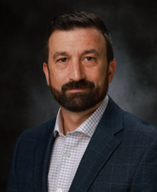
Lucian Spiteri, P.E., Keller North America
Lucian Spiteri, P.E., is the Chief Engineer for the Grouting division of Keller North America. Over his career in geotechnical construction, he has worked on a variety of grouting and ground improvement projects in support of various tunnel, infrastructure, commercial and industrial construction projects utilizing a wide range of techniques to solve geotechnical challenges. Mr. Spiteri is based out of the New York Metropolitan area and is involved with Keller’s grouting works across the United States. During his tenure, Mr. Spiteri has been an active member of the community working to advance the state of the practice by sharing his experience and expertise with the engineering community through frequent seminar and conference presentations, the publication of technical papers, instruction at short courses, and by serving on industry committees. Mr. Spiteri holds a Bachelor of Science in Civil Engineering from Manhattan College and is a licensed Professional Engineer in New York. Lucian is a member of ASCE, and UCA as well as an active member of The Moles.
Jet Grouting Solutions for Excavation Support & Groundwater Control in Complex Environments
As the need for improvements and upgrades in dense urban areas increases, conventional construction techniques need to be adapted and improved to meet the industry’s growing needs. To allow relatively dry below-grade construction with limited impacts to adjacent structures, rigid and impermeable excavation support systems are required. However, conventional methods may lack the constructability to consider impacts for third party stakeholders such as utility companies, property owners, and transportation systems, while also considering obstructions such as remnant foundations or support of excavation systems. This presentation covers a series of case studies highlighting the adaptability of jet grouting to facilitate low permeability and/or rigid support of excavation in urban environments where other methods would have fallen short.
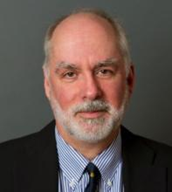
Richard Bathurst, Ph.D., P.Eng., Royal Military College of Canada
Dr. Bathurst is Professor Emeritus of Civil Engineering at the Royal Military College of Canada, where he has taught since 1980. He also holds a cross-appointment with the Civil Engineering Department at Queen's University and an appointment as a Visiting Research Fellow at the Port and Airport Research Institute in Japan (2016-2026). He was the President of the Engineering Institute of Canada (2016-2018), Past-President of the Canadian Geotechnical Society (CGS) (2013-2014), Past-President of the International Geosynthetics Society (1998-2002), and Past-President of the North American Geosynthetics Society (1998).
Dr. Bathurst has authored or co-authored 227 papers in referred journals and made over 300 other scholarly contributions. He has made contributions in the areas of micromechanics of granular soils, railway ballast and track dynamics, pavement drainage, unsaturated soil-geotextile behavior, constitutive modeling of geosynthetic soil reinforcement materials, new test methods and the development of transparent granular soil surrogates for geotechnical laboratory-scale testing, and prediction of tsunami run-up. Dr. Bathurst’s current research activities are focused on the use of geosynthetic and metallic reinforcement in earth retaining wall systems including environmental impact assessment and sustainability, soil nailing, numerical modeling, seismic performance and design of these systems, probabilistic design of reinforced and unreinforced soil structures, reliability-based design, and load and resistance factor design (LRFD) calibration of soil-structures.
From Measurement to LRFD Calibration of MSE Walls
Mechanically stabilized earth (MSE) walls constructed with steel and geosynthetic reinforcing elements are now well-established technologies. The lecture describes how measurements taken from instrumented full-scale field and laboratory walls were collected and interpreted to quantify the accuracy of current analytical equations used to calculate reinforcement loads in MSE walls under operational (in service) conditions. Databases for the resistance side in internal limit state design equations are described next. The lecture then explains how these measured data have been used to calibrate limit state design equations that appear in the AASHTO load and resistance factor design (LRFD) framework for tensile strength and pullout failure modes. A simple closed-form solution is used to carry out the calculation of the resistance factor for the case of a prescribed load factor. The equation is easily implemented in a spreadsheet and thus avoids the use of Monte Carlo simulation which is often unfamiliar to geotechnical engineers, or at least viewed as tedious. The lecture will remove the cloak of mysticism often associated with the source of resistance and load factors that appear in design codes, and thus give practicing design engineers confidence in their use.
Sheraton Hartford South, 100 Capital Boulevard, Rocky Hill, CT 06067
Discounted Rooms have been reserved on Thursday for this Conference. Here is the room registration link: https://www.marriott.com/event-reservations/reservation-link.mi?id=1752841124517&key=GRP&app=resvlink
Early Registration Rates before September 6, 2025 / Regular Registration Rates
ASCE Member - Includes NYS PDHs - $275.00 / $325.00
Non ASCE Member - Includes NYS PDHs - $350.00 / $375.00
Government Employee, Faculty and Retired Person - Includes NYS PDHs - $100.00 / $120.00
Younger Member - Under 35 Years of Age & Includes NYS PDHs - $175.00 / $200.00
Student/Faculty Registration - ID Required at Registration - No NYS PDHs - $25.00 / $35.00
Exhibitor – $800 (Includes 1 Attendee and 1 Exhibit Table, selection of table location first come, first served)
Additional Exhibitor - Each exhibit table includes 1 exhibitor. Once an exhibit table is purchased, additional exhibitors may register separately for $150 each. No NYS PDH’s are included with exhibitor table or additional exhibitor registrations.
Exhibitor Layout (also at the top of this page)
Exhibitors have long supported our events and can offer solutions for our projects. At our past workshops, seminars and conferences, geotechnical suppliers, contractors, and service providers displayed their latest products for design professionals, contractors, owners, and academicians. We are always looking for exhibitors to join us at our events.
Sponsors have long supported our events and can offer solutions for our projects. At our past workshops, seminars and conferences, geotechnical suppliers, contractors, design engineers, and service providers have sponsored our events to help make them successful and to raise money for CSCE’s Scholarship Fund.
Bedrock Sponsor - 2 Available (SOLD OUT) - $2,500
This sponsorship level includes prominent display of logo on promotions and program, 1st selection of premier exhibitor booth location (Exhibitor table not included, must register separately), invitation for 2 to the reception dinner the night before, podium mentions, and 2 attendee registration. Please submit your logo to [email protected] after you register for the conference.
Friday Reception Sponsor - 1 Available - $2,000
This sponsorship level includes display of logo on promotions, 1 invitation for reception the night before, your company logo on table placards during the reception immediately following the conference, podium mentions, and 1 attendee registration. Please submit your logo to [email protected] after you register for the conference.
Breakfast Sponsor - 1 Available - $1,800
This sponsorship level includes 1 invitation for reception the night before, your company logo on table placards during breakfast, podium mentions, and 1 attendee registration. Please submit your logo to [email protected] after you register for the conference.
Foundation Sponsor - 3 Available - (2 LEFT) - $1,600
This sponsorship level includes display of logo on promotions and program, advance selection of exhibitor table location (exhibitor table not included, must register separately), 1 invitation for reception the night before, your company logo on table placards, podium mentions, and 1 attendee registration. Please submit your logo to [email protected] after you register for the conference.
Concrete Sponsor - 5 Available (SOLD OUT) - $1,000
This sponsorship level includes display of logo on promotions and program, 1 invitation for reception the night before, podium mentions, and 1 attendee registration. Please submit your logo to [email protected] after you register for the conference.
🎉 2025 Call for Abstracts - This call has closed for 2025.
The Connecticut Valley Chapter of the ASCE Geo-Institute is pleased to invite practitioners, contractors, researchers, educators, and vendors to submit abstracts for presentations at our 2025 GEO-CONNECTICUT Conference.
🗣️ We are seeking 25-minute in-person presentations (followed by a 5-minute Q&A session) on a wide range of geotechnical engineering topics, with an emphasis on innovative technologies, practical solutions, and real-world applicability. We welcome submissions from across the geotechnical engineering community and encourage presentations that showcase innovative practices, unique challenges, case studies, interesting construction projects, and applicable research.
Event Details:
Date: Friday, September 26, 2025
Time: Approximately 8:00 AM – 4:00 PM
Location: Sheraton Hartford South in Rocky Hill, CT
Format: In-person only; presentation only (no written paper required)
Submission Guidelines:
Abstract Length: 250–500 words
Visual: Include one photo/graphic that illustrates the topic
Deadline: Friday, August 1, 2025
Please click here to submit an abstract.
If you have any questions or concerns, you may email, call, or text the following contacts:
Amy Petrone, CSCE Administrative Assistant, [email protected], 860-879-2723
Cassandra Champagne, CT Valley Chapter of the ASCE Geo-Institute, [email protected], 401-440-6704
For inspiration, please view past speakers and abstracts at the bottom of this webpage: https://sections.asce.org/connecticut/contacts



